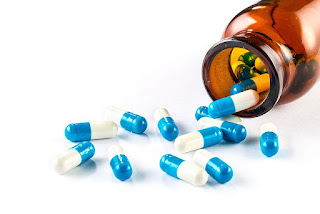The global Anti Radiation Drugs Market Growth Accelerated by Technological Advancements
Anti-radiation drugs offer protection against the harmful effects of radiation exposure. They help protect DNA from damage caused by radiation and reduce the risk of cancer development. The increasing use of radiation therapy for cancer treatment and ongoing research for development of improved radiation countermeasures are driving demand for anti-radiation drugs.
The
global Anti Radiation Drugs Market is estimated to be valued at US$ 587.4 Mn in
2023 and is expected to exhibit a CAGR
of 9.6% over the forecast period 2023 to 2030, as highlighted in a new
report published by Coherent Market Insights.
Market key trends:
Technological advancements are expected to accelerate the growth of the
anti-radiation drugs market over the forecast period. Researchers are
developing novel drug delivery methods such as nanotechnology-based
formulations to improve the efficacy of existing anti-radiation drugs. For
instance, encapsulating drug molecules in nanocarriers can help in targeted
delivery of drugs to tumor sites, reduce systemic side effects and enhance
bioavailability. Nanotechnology has shown promising potential in
radioprotection and is being explored for development of new class of
anti-radiation nanomedicines. Such innovations are likely to bring more
effective anti-radiation treatment options.
Segment Analysis
The global
anti-radiation drugs market size is segmented on the basis of drug
class, therapeutic area and distribution channel. On the basis of drug class,
the market is segmented into chemotherapy drugs and gene therapy drugs. The
chemotherapy drugs segment is expected to be the dominating sub-segment owing
to the high adoption of chemotherapy drugs for cancer treatment. Chemotherapy
targets rapidly dividing cells and stops or slows the growth of cancer cells
which eventually die off. On the basis of therapeutic area, the market is
segmented into cancer and other diseases. The cancer segment is dominating as
anti-radiation drugs are majorly used for the treatment of cancer. On the basis
of distribution channel, the market is segmented into hospital pharmacies,
retail pharmacies, and online pharmacies. The hospital pharmacies segment
accounts for the major share of the market due to the high number of cancer
patients visiting hospitals for treatment as well as availability of wide range
of drugs in hospital setup.
Key Takeaways
The global anti-radiation drugs market is expected to witness high growth
over the forecast period. The global Anti Radiation Drugs Market is estimated
to be valued at US$ 587.4 Mn in 2023 and is expected to exhibit a CAGR of 9.6%
over the forecast period 2023 to 2030.
North
America is currently dominating the global anti-radiation drugs market owing to
factors such as high prevalence of cancer, growing awareness about anti-radiation
drugs, rising healthcare expenditure and availability of well-developed
healthcare infrastructure in the region. The market in Asia Pacific is expected
to witness the fastest growth over the forecast period majorly attributable to
rising cancer incidences, growing awareness among population about
anti-radiation drugs and improvement in healthcare infrastructure in emerging
Asian countries.
Key players operating in the anti-radiation drugs market are DIC Corporation,
Dow Chemical Company, BASF SE, Arkema Group, Celanese Corporation, Trinseo, The
Lubrizol Corporation, Wacker Chemie AG, Synthomer Plc, and Asahi Kasei
Corporation.
Get
more insights on this topic: https://www.newsstatix.com/anti-radiation-drugs-market-share-and-opportunity-analysis-2023-2030/




Comments
Post a Comment